
Lymantria is a genus of tussock moths in the family Erebidae. They are widely distributed throughout Europe, Japan, India, Sri Lanka, Myanmar, Java, and Celebes. The genus was erected by Jacob Hübner in 1819.

Arna is a genus of tussock moths in the family Erebidae. The genus was erected by Francis Walker in 1855. It contains many species formerly included in the genus Euproctis, such as Arna bipunctapex.
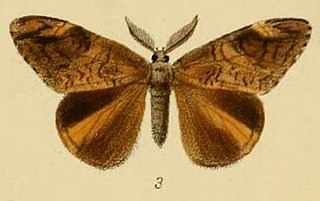
Aroa is a genus of moths in the subfamily Lymantriinae first described by Francis Walker in 1855. Species are distributed in South Africa, China, throughout India, Sri Lanka, Myanmar, and Java.
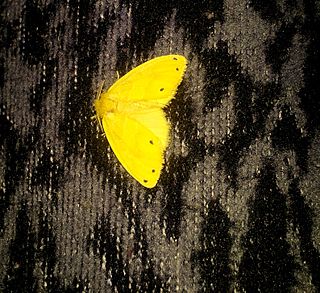
Artaxa is a genus of tussock moths in the family Erebidae erected by Francis Walker in 1855. Some of the species have urticating hairs.
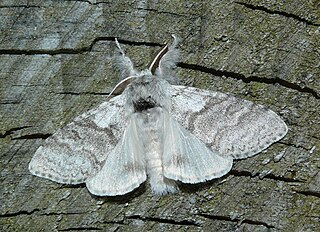
Calliteara is a genus of tussock moths in the family Erebidae. The genus was erected by Arthur Gardiner Butler in 1881.

Carriola is a genus of tussock moths in the family Erebidae. The genus was erected by Charles Swinhoe in 1922. It was synonymized with Arctornis in 2015 by Wang et al., and subsequently revised in 2024 by Shovkoon & Trofimova.

Daplasa is a genus of moths in the subfamily Lymantriinae of the family Erebidae erected by Frederic Moore in 1879. It is the sole member of the tribe Daplasini erected Jeremy Daniel Holloway and Houshuai Wang in 2015.
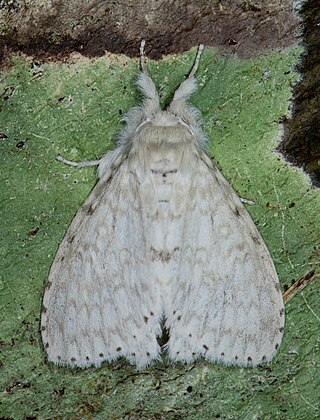
Dura is a genus of tussock moths in the family Erebidae. The genus was erected by Frederic Moore in 1879.

Euproctis is a genus of tussock moths in the family Erebidae described by Jacob Hübner in 1819. Species are cosmopolitan, widespread throughout Palearctic, African, Oriental and Australian regions. Molecular phylogenetic studies indicate that the genus as presently understood comprises a large number of unrelated lineages, only a few of which have names, and is therefore in serious need of revision.
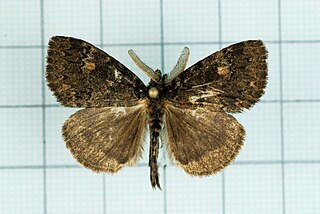
Ilema is a genus of tussock moths in the family Erebidae. The genus was described by Walker in 1855 and renamed by Moore in 1860, because Walker's chosen name was preoccupied.

Laelia is a genus of tussock moths in the family Erebidae. The genus was described by Stephens in 1828. Species are well distributed throughout Europe, Japan, China, India, Sri Lanka, Myanmar and Java.

Leucoma is a genus of tussock moths in the family Erebidae. The species are well distributed in Palearctic, Ethiopian, and Oriental regions along with New Britain and Ireland. It was described by Jacob Hübner in 1822.

Nygmia is a genus of tussock moths in the family Erebidae. The genus was erected by Jacob Hübner in 1820.

Orvasca is a genus of tussock moths in the family Erebidae. The genus was erected by Francis Walker in 1865.
Pantana is a genus of tussock moths in the family Erebidae. The genus was erected by Francis Walker in 1855.
Rhypotoses is a genus of tussock moths in the family Erebidae. The genus was erected by Cyril Leslie Collenette in 1931.
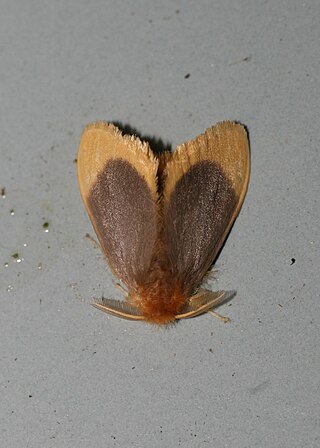
Toxoproctis is a genus of tussock moths in the family Erebidae. The genus was erected by Jeremy Daniel Holloway in 1999.

Carriola ecnomoda is a moth of the family Erebidae first described by Charles Swinhoe in 1907. It is found south-eastern Asia, Sundaland and the Philippines. In 2015, the genus Carriola was synonymized with Arctornis by Wang et al., but subsequently revised in 2024 by Shovkoon & Trofimova.

Olene is a genus of tussock moths in the family Erebidae. The genus was erected by Jacob Hübner in 1823.
Carriola fenestrata is a moth of the family Erebidae first described by George Hampson in 1893. It is found in India and Sri Lanka.
















